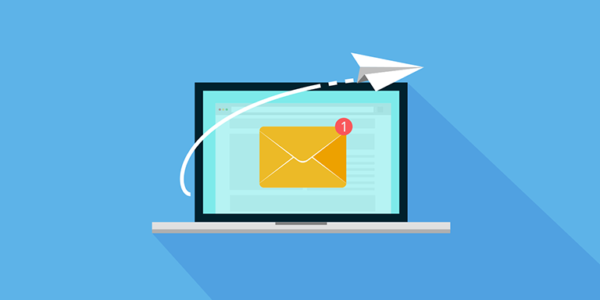Seven Rules for Writing Emails that Engage Prospects

Email is a fact of life – especially in today’s digitally dominant work environment. The number of emails we send and receive daily tends to make our approach robotic. If it’s been a while since you’ve taken a step back and really looked at your email through the recipient’s eyes, it’s time to brush up your skills.
Here are seven strategies to make email an effective engagement tool.
1. Read it out loud…then do it again
Sometimes the simplest solutions solve the biggest problems. Nothing kills a first impression more than failing at the basics: spelling errors, missing words, and other grammar issues. These mistakes scream a lack of attention to detail or a general lack of concern.
We get it: There is more work to be done now, with fewer people to help. However, don’t be tempted to rush. Take the time to read your emails out loud to yourself and spot those obvious mistakes. If needed, programs like Grammarly work wonders by revealing errors a normal automated spell checker would miss.
2. Be human
Templates are great, but they’re predictable and transparent. It’s more important than ever to show that you understand your prospect’s challenges, so get personal! It takes time to research your recipients and understand their world. Personalization can no longer be faked. Taking the time to customize your email includes using their industry lingo, understanding their company’s position in the market, and aligning yourself with their needs – increasing engagement and trust.
3. Don’t be sneaky
Doing anything to trick your reader will quickly lead to failure. Subject lines like “Re: next steps” might increase open rates by tricking recipients into thinking they’re continuing a conversation. But this immediately violates trust. Being deceitful puts the receiver on the defensive and will subvert any benefit. A genuine approach will always go further.
For helpful tips on subject lines, the Internet is your friend. Just search for “subject line checker” or “best subject lines,” and you’ll find no shortage of inspiration.
4. Re-engage with humor
It is easy to give up when someone fails to respond after one or two emails. It’s easy to assume they just aren’t interested. Some salespeople decide to persevere and fall on the other end of the spectrum by sending repeated emails for weeks or months, with the same messaging – pushing the customer away purely by irritating them. Obviously neither is beneficial.
Instead, think of email in threes. Your first email should be brief but informative, with a strong call to action. If you don’t get a response, your second email can also be standard – but make it even shorter (125 words or less). If you’re still not receiving anything back from the recipient, go big with your third email and use humor. This, more than anything, can elicit a response.
In 1981, O’Quinn and Aronoff ran an experiment where subjects were told to sell art pieces for $6,000. Half of the salespeople were required to use the line, “That’s my final offer…and I’ll throw in a pet frog.” This led to smiles, relaxation, and people being ready to engage during the study. The same smiles, relaxation, and willingness to engage can be achieved with the right humor in your email.
5. Make meeting you as easy as possible
Do you have a scheduling link in your email yet? Your competitors do. People expect to be able to book meetings with you, quickly and online, and on their own terms. There’s really no excuse in a professional sales environment to not give interested parties a scheduling option in your email. Calendly is a favorite and has a free option.
6. Give two options to avoid decision paralysis
You’ve done it: You have engaged a prospect’s interest. What do you do now? Possibly the worst thing you can do is leave things open-ended. For example, when asked, “When’s a good time to schedule a demo?” a prospect can freeze and not respond, or say they are too busy. Instead, make it easy for them by offering two potential times they can choose from; or, even better, direct them to your scheduling link where they will be able to see and easily select the best time.
Also, plan to use confirmation emails and ask for feedback or clarity/additional information.
Confirmation emails can be tricky as well. If not written correctly they can be difficult to follow up on. Frame every confirmation email so it requires feedback or clarity. Be specific by asking them something they need to answer as opposed to a statement. If the person doesn’t respond, you have a valid reason for another follow-up.
7. Avoid stagnant templates
The reality is that, a lot of times, you need to use a template to help reach everyone on your list. The template doesn’t have to be obvious or feel canned. After taking into consideration the six rules above, the best thing you can do is A/B test and improve. Make small changes and send the updated email to half your list and the old template to the other half. See what drives results. Don’t just stop after you find one solid change; successful emailers continue to test throughout the year.
Email isn’t just a way we can communicate back and forth; it’s a key asset in the sales process and helps in closing more deals. Make sure you’re following the best practices and avoiding the above pitfalls and you’ll increase your response rate and success over email.
Cherryl Pressley is CEO of Black Pearl Mail.
Get our Enewsletter
Get the latest sales leadership insight, strategies, and best practices delivered weekly to your inbox.
Sign up NOW →